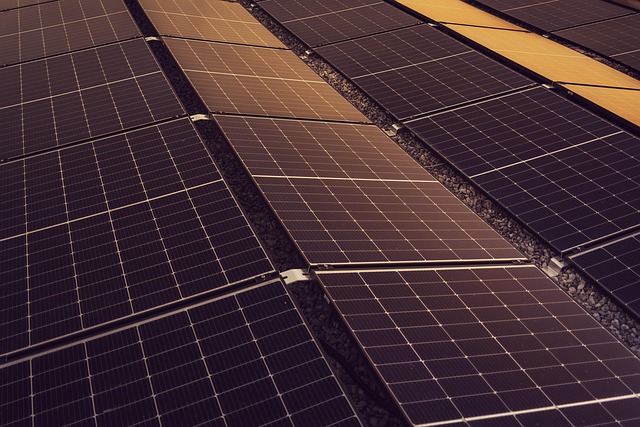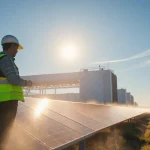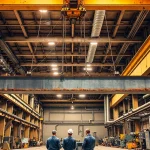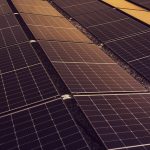Factories face rising energy costs and increasing pressure to reduce emissions. Industrial solar panels transform vast roof spaces into cost-saving power sources. By generating clean, affordable electricity onsite, factories can cut bills by up to 8% annually and achieve payback within five years. Understanding panel types, installation, and benefits helps businesses make smarter, sustainable energy choices that boost efficiency and support long-term growth.
Industrial Solar Energy Solutions for Factories: Core Benefits, ROI, and Cost Management
For modern manufacturing, Solar Panel Installation for Factories stands out as a highly practical solution for slashing operational costs and stabilizing energy budgets. Factories are driven to solar adoption by three main goals: lowering energy spending, achieving environmental targets, and boosting independence from an unstable grid. Rooftop solar directly addresses these with on-site power generation, using factory roof space to reduce grid reliance and insulate operations from price hikes.
Additional reading : What Are the Key Factors for Developing a Sustainable Business Model for a Brighton-Based Retail Store?
Financially, most factories investing in industrial solar energy solutions see typical installation costs between £750 and £1,000 per kWp, with payback timeframes generally spanning three to six years even faster when energy usage is high or grid prices rise. Savings can reach up to 8% of total bills annually, and the solar electricity unit cost of about 5p/kWh is far below grid rates. These savings do not fluctuate, enabling reliable long-term forecasting.
Environmentally, industrial solar power supports measurable emissions reductions and helps companies meet ESG and Net Zero objectives. For factories, this cleaner energy source fosters a stronger brand reputation, supports regulatory compliance, and demonstrates leadership in sustainable manufacturing.
Topic to read : Self Storage Options in Glasgow: Complete Guide & Overview
Specifications, System Types, and Suitability for Factory Needs
Industrial solar systems for factories are precision-engineered for high energy loads and operational continuity. Factories typically use two main solar power system types: on-grid and hybrid. On-grid systems connect directly to the commercial grid, enabling surplus solar electricity to offset facility demand, while hybrid systems incorporate battery storage and an Energy Management System (EMS) for backup during outages and peak demand management.
Assessing factory rooftops is crucial. Key parameters: usable space, structural strength, and orientation. Ideally, roofs should have strong support and minimal shading; south-facing installations in the UK maximize generation. Surveying ensures the factory can handle panel weight—typical panels measure 1.8 x 1.1 metres—and the industrial site meets grid safety requirements.
Modern factories often benefit most from hybrid solar power setups. These designs include storage batteries for load-shifting and supply through outages, with EMS software optimizing production and export. Grid connection allows for seamless switching or surplus export, supporting energy independence and reducing costs while maintaining robust power supply for all operational needs in 2025 and beyond.
Installation, Maintenance, and Regulatory Considerations in Industrial Solar Adoption
Step-by-step installation process: from site survey to connection and commissioning
Factory roof solar panel installation starts with a precise site survey. Engineers assess roof strength, orientation, shading, and available area to optimize placement and maximize energy capture. Once a bespoke solar power plant design for factories is approved, installation contractors procure high-durability panels, inverters, and racking systems. Installation—often completed in 6–8 working days for a 100 kWp system—involves minimal business disruption. Connection to factory electrics and commissioning follow, ensuring seamless solar integration and safety compliance.
Maintenance protocols and long-term reliability
Solar panel warranty for industrial use typically spans 25 years, with panels retaining over 85% efficiency after that period. Maintenance protocols emphasize annual cleaning and inspections, supported by remote system monitoring for performance anomalies. Routine servicing is cost-effective, usually less than £500 per year, preventing unexpected downtime and ensuring longevity.
Regulatory, compliance, and permitting requirements
Solar installation contractors for factories guide clients through planning permissions and regulatory documentation. Most factory roof installations do not need formal planning permission, provided a 1-meter roof perimeter is maintained. Ground systems or installations on protected structures require additional permits. Scalability considerations allow future capacity expansion with minimal regulatory hurdles, supporting evolving energy needs.
Leading Manufacturers, Case Studies, and Trends in Industrial Solar for Manufacturing
Top manufacturers, equipment selection, and supplier vetting for industrial-scale systems
Solar panel supplier assessment focuses on factors like warranty length (minimum 25 years for most high-quality industrial panels), expected panel efficiency after decades (over 85% in top models), and track record with large-scale installations. Manufacturers such as Canadian Solar and SunPower deliver reliable performance, scalability, and components suitable for both metal and membrane roofs—critical for manufacturing sites. Vetting suppliers involves checking technical accreditations, system monitoring options, and UK compliance on inverters and battery storage.
Benchmark case studies: successful installations, production metrics, and CO2 savings in diverse factory settings
Installations range from 25 kWh up to 617 kWh, with site-specific outputs from 38,000 kWh to nearly 500,000 kWh per annum. At West Coast Corrugated, a 1,166-panel system yields 13 tonnes of CO2 reduction per year and slashes electricity bills by approximately 25%. In heavy manufacturing, Swift Precision Engineering’s 617 kWh array offsets 150 tonnes of CO2 annually, while Evans Concrete’s 246 kWh setup delivers 51 tonnes saved, highlighting solar’s consistency.
Industry trends, government incentives, and the future landscape for factory solar power in the UK
Solar industry trends for factories point to increasing adoption of energy management software, demand-led financing, and advanced PV-battery combinations. With commercial solar now costing around 5p per kWh (grid: 22–25p), investment certainty and alignment with carbon targets drive growth. Ongoing support for grants and tax allowances ensures accessibility, while panel design continues improving for both output and integration flexibility.











